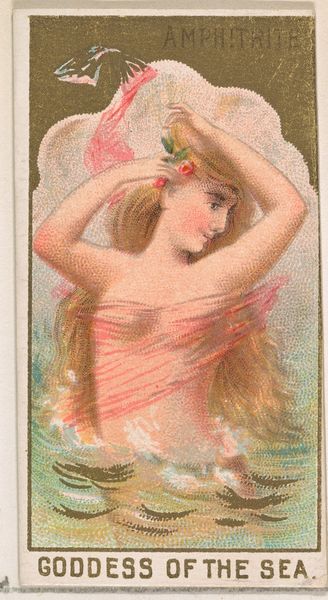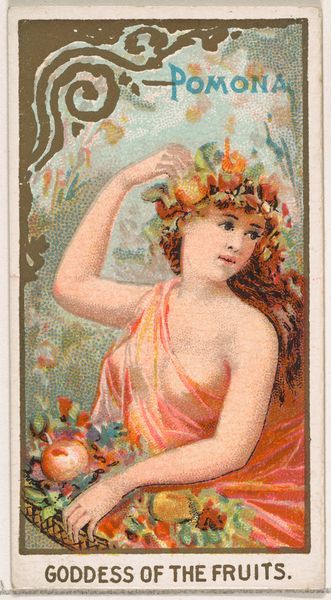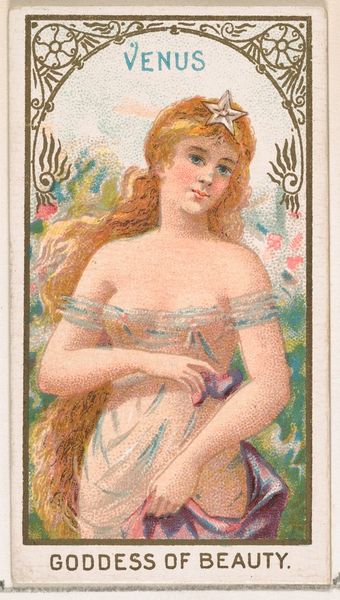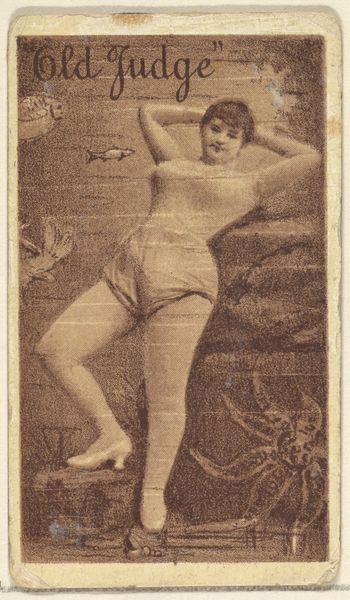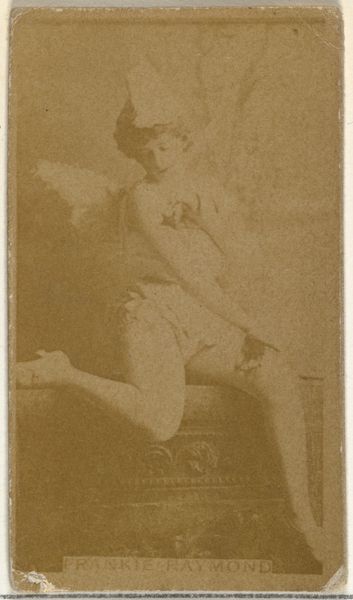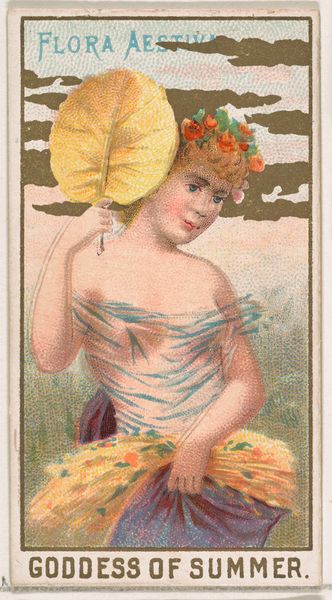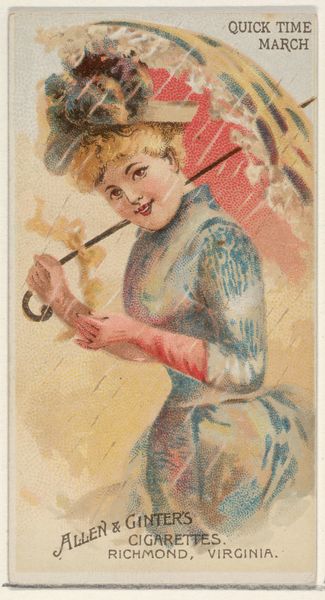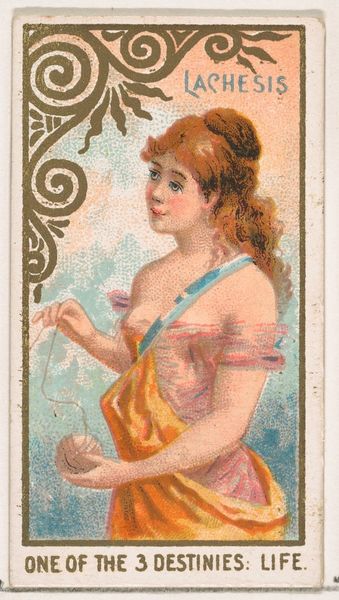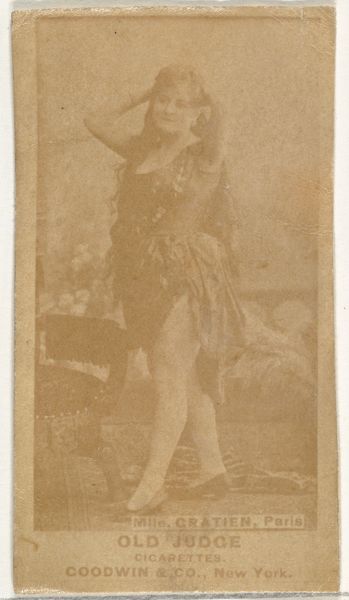
Terpsichore, Muse of the Dance, from the Goddesses of the Greeks and Romans series (N188) issued by Wm. S. Kimball & Co. 1889
0:00
0:00
drawing, print
#
portrait
#
drawing
# print
#
figuration
#
genre-painting
#
academic-art
Dimensions: Sheet: 2 3/4 × 1 1/2 in. (7 × 3.8 cm)
Copyright: Public Domain
Curator: This is "Terpsichore, Muse of the Dance," a print from the "Goddesses of the Greeks and Romans" series issued in 1889 by Wm. S. Kimball & Co. Editor: My first impression is one of faded grandeur. The image's composition, with the figure gracefully reaching upwards, suggests a sense of aspiration and ethereal movement, yet the clear material decay is hard to ignore. Curator: Absolutely. Note how the artist uses line and form to evoke a classical ideal, almost certainly echoing academic art traditions. The flowing fabric above Terpsichore's head creates diagonal lines to complement her curvilinear body, embodying a refined grace through considered composition. Editor: Yet, thinking about Kimball & Co., as distributors, reveals another layer. It’s printed, probably reproduced on a mass scale—intended as a commercial item included with cigarettes! It connects the "high" subject matter of classical mythology to the everyday experience of consumption. I see those fine lines as potentially being engravings added after the fact, to differentiate a luxury product. Curator: I understand your point about mass production. But the semiotics of her pose – the raised arms, the slight contrapposto – these are classical tropes designed to elevate the subject, reminding us of sculptures or history paintings. Consider how her upward gaze is not simply physical but indicative of intellectual pursuit and artistic enlightenment. Editor: But isn’t the means by which it reaches the consumer paramount here? Cigarette cards celebrated luxury in a very distinct way; and labor was being commodified similarly, across social strata, even classical iconography found its way to cigarette packages and trade cards, further muddying ideas about craftsmanship versus manufactured things. Curator: A fascinating angle! By recontextualizing classical forms within commercial ephemera, a new form of value is produced. Perhaps it challenges a traditional art world obsessed with uniqueness. But if we prioritize function over formal aesthetic achievements we run the risk of negating her expression of divine influence. Editor: Indeed. The piece becomes both artifact and ideal, blurring boundaries of cultural importance and everyday use through production. Ultimately, we see the tension between a yearning for timeless artistry, while acknowledging how deeply that artistry becomes embedded in the culture around its dissemination.
Comments
No comments
Be the first to comment and join the conversation on the ultimate creative platform.

